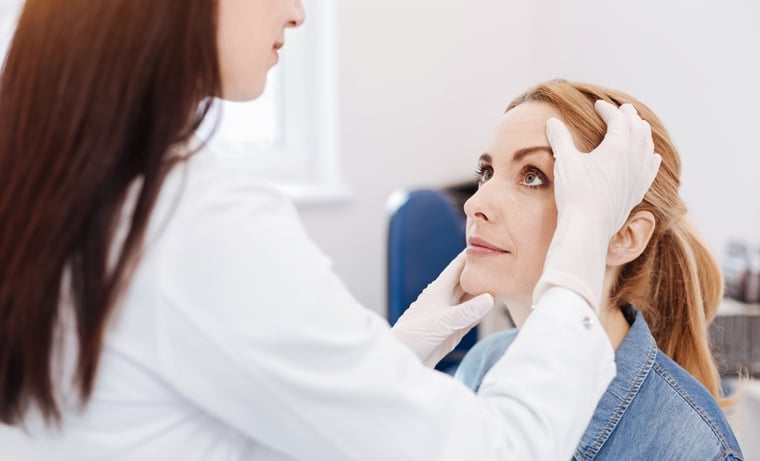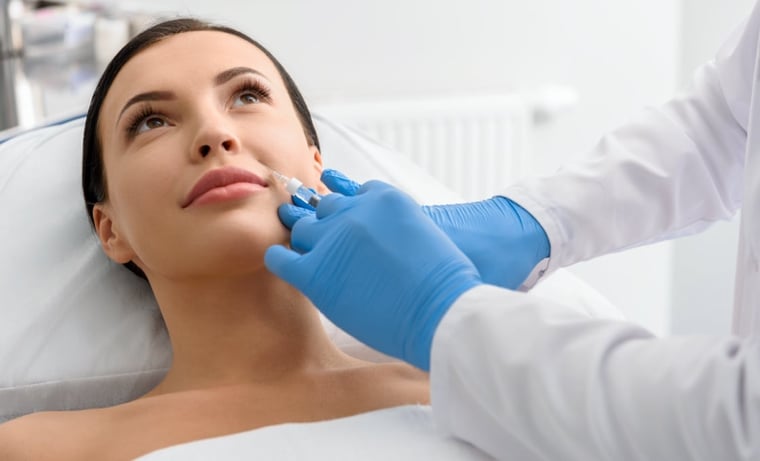

Botox® Cosmetic Services
in Ann Arbor, MI
How Does BOTOX® Work?
BOTOX® Cosmetic is an injectable treatment that can soften the appearance of wrinkles, creating smoother and younger-looking skin. As you age, you might start to notice lines and wrinkles on your forehead, between your eyebrows, and around your eyes. Repetitive facial expressions, such as squinting, smiling, or frowning, can cause these wrinkles to deepen over time and remain noticeable even when your face is relaxed.
How Does BOTOX® Cosmetic Treatment Work?
BOTOX® contains purified botulinum A toxin, which temporarily blocks the nerve signals that cause facial muscles to contract. This reduction in muscle movement allows the skin to remain at rest even when making certain facial expressions, which smooths the lines and wrinkles for a more youthful look.
REQUEST NOWWhat Happens During a BOTOX® Treatment Session?
To ensure that you’re as comfortable as possible during the procedure, your Forefront dermatologist will apply ice or a topical anesthesia to numb the treatment areas. Next, they’ll prepare a small syringe with the recommended dosage of botulinum toxin. A thin needle will be used to inject the serum into the targeted areas. Most patients feel mild discomfort or a slight pinch during treatment.
It’s common for people to receive three to five injections per BOTOX® treatment, but the number you receive will depend on the size of the treatment area and the severity of your symptoms. This non-invasive procedure is usually straightforward and relatively quick, and can be completed in as little as ten minutes.
Your expert Forefront dermatologist will give you instructions for care following your procedure, and you’ll be able to immediately resume your everyday activities. There is minimal to no downtime associated with the procedure, although you should be aware of certain safety restrictions. It’s important for you to avoid rubbing or massaging the treatment area since this can cause the botulinum toxin to migrate to other areas of the face.
What Are the Treatment Areas for BOTOX® Injections?
Common treatment areas include wrinkles between the eyebrows, the corners of the eyes, the forehead, and the sides of the mouth. You can also use Botox® to treat hyperhidrosis and migraines.

What Results Can I Expect from BOTOX®?
Within 24 to 48 hours, you’ll notice a significant reduction of moderate to severe lines and wrinkles. Full results can be expected within one week. Your results will last for approximately four months as the ingredients are broken down and absorbed by the body.
To maintain your smooth, more youthful appearance, you’ll need to receive another treatment within three to six months. Since the formula is safe for repeated treatments, you can schedule injections with your Forefront dermatologist as needed. Our doctors will design a treatment plan that will best meet your aesthetic goals.
Are There Any Side Effects?
When performed by one of our Board-Certified Forefront dermatologists, any side effects are generally mild, and many people don’t experience any side effects at all. Some people might have redness or bruising at the injection site, although this is only temporary and usually subsides after a few days. Although rare, these serious side effects may occur:
- Double vision
- Blurred vision
- Difficulty swallowing
- Wheezing or difficulty breathing
- Rash
- Itching
- Dizziness
You should seek emergency medical attention as soon as possible if you experience any side effects after receiving Botox®.
Where Can I Receive Botox® Treatment?

1 Location in the Ann Arbor, MI area
Interested in BOTOX® Cosmetic? Request a consultation with a skin specialist today.
*Treatment options may vary at each location.Please confirm your desired treatment is offered at your preferred location when scheduling. *Age Restriction.
For patients scheduling who are under 18 years of age (19 in Alabama) please make sure you have permission from your parent or legal guardian to schedule this appointment. Your parent or legal guardian must accompany you on your initial visit and on certain subsequent visits to provide appropriate informed consent.